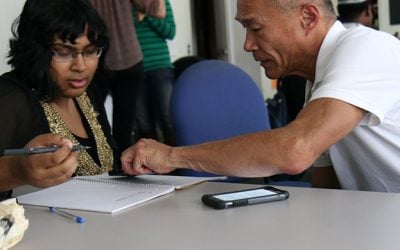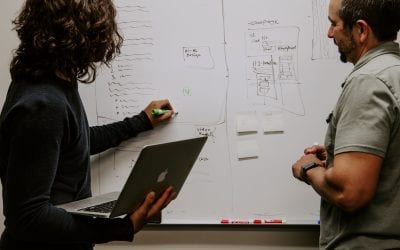Blog
Stay up-to-date on the latest Higher Education, K-12 and Curriculum Design content.
Recent Blogs
7 Essentials Colleges Can Integrate into their LMS Systems
Instructors need to be clear and concise about what the student needs to do. The simple landing page for the course should tell and show the learner what to do. A good LMS brings college students up to speed with almost zero training. Also, students should be able to find what they need. Likewise, the design should be simple for…
6 Ways Colleges Can Help Students Who are Struggling with Online Learning
Online learning looks like it’s here to stay. Some students thrive in the remote classroom. Still, many students struggle with online learning. Schools will benefit if they take the time to figure out ways to help these students. Below are six ways to help students who are struggling with online learning.
5 Reasons Why K-12 Publishers Should Focus on Producing Interactive Books for STEM Learning
Now teachers can assign students interactive books based on their interests. Educators can find eBooks that fill a student’s knowledge gap. Also, teachers can give talented and gifted students more information on topics that interest them. Likewise, by creating interactive reading materials on STEM topics, publishers give teachers the flexibility to meet each student’s reading level. Publishers win over the teachers when they give them tools that make their job easier.
Why Educational Publishers Are Expected to Use More Course Authoring Tools in the Future
The educational publishing scene continues to shift from paper materials. Leaders need to find a way to offset the decline in revenue from print products. To that end, a way to offset this loss from print products could be in digital product sales. Still, publishers shifting their team from a print-first workflow to a digital-first strategy takes strong leadership and time. Yet, the shift to digital textbooks will take years. Besides that, paper textbooks will not ever go away. As a result, leaders need a digital-first/print-second strategy. One of the first steps…
5 Ways Educational Publishers Can Facilitate Social-Emotional Learning in K-12
After a year of lockdowns, teachers believe social-emotional learning is more important than ever. Educators know the benefits of social-emotional learning in the classroom. SEL aids academic achievement, creativity, citizenship, and workforce readiness in students. How can publishers help districts meet this growing need? Below are five ways publishers can help schools meet the needs of their students. First, a publisher can look at…
Why Investing in Ancillary Materials for Textbooks Could Increase Sales for K-12 Publishers
Ancillary items are important to textbook sales. What are ancillaries? Additional items can range from teachers’ guides, presentation slides, online study guides, and more. Educators use these extra materials in a variety of ways to support student learning. Ancillary items may be remote-ready. Why should K-12 publishers invest in creating high-quality ancillary materials?
4 Reasons Why Colleges Need to Develop Curriculum Around Guided Pathways
Early adopters, of the guided pathway model, experience high success rates at their colleges. These institutions enjoy higher completion rates in their programs. Graduates of the student pathway college programs enjoy good jobs. How did they do it? They followed a plan that works.
4 Common Mistakes Universities Make When Designing Their Next Curriculum
What’s so difficult about creating a new snazzy curriculum that wows? So, it turns out quite a few challenges are lurking out there in that dusty stack. Here are four common mistakes to keep in mind when developing the next university curriculum.
6 Ways to Promote Critical Thinking Through eLearning
Critical thinking skills are needed. Sadly, critical thinking skills are not something that can be taught in a short amount of time. While it is tempting to create one eLearning course and go, critical thinking must be promoted throughout a series of courses to create deep learning experiences. Savvy course creation teams work in ways to promote critical thinking…
The Importance of Designing eLearning Courses For Different Generations in Higher Ed
There’s lots of chatter about creating eLearning courses for different generations in Higher Ed. Let’s start by saying that there is no question that students of different generations learn, think, and connect differently.
7 Reasons Why Publishers Should Revamp Legacy eLearning Courses
So much content. So many lessons learned. Here are seven reasons why revamping legacy eLearning courses is a surprisingly good idea. Course authors know the world has changed a lot since eLearning…
The Importance of K-12 High-Quality Instructional Materials
High-quality materials (HQIM) take time to create. Besides that, well-designed HQIM materials stand the test of time. Teachers stick with what they know works. Likewise, publishers who create HQIM get the following…












